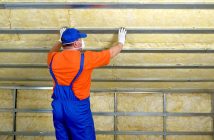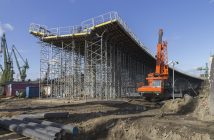The concrete is harder, better for the environment, dries faster and is stronger than traditional mixes according to researchers at Melbourne’s RMIT University
Renee Mckeown – The Urban Developer
The researchers are studying the use of different aggregates and printing patterns to support more complex and creative architectural structures.
One study found bio-mimicking spiral patterns in lobster shells improved the overall durability of the 3D printed concrete, as well as enabling the strength to be precisely directed for structural support where needed.
Lead researcher Jonathan Tran said when the team combined the twisting patterns with a specialised concrete mix enhanced with steel fibres, the resulting material was stronger than traditionally-made concrete.
“We know that natural materials like lobster exoskeletons have evolved into high-performance structures over millions of years, so by mimicking their key advantages we can follow where nature has already innovated,” Tran said.
“As lobster shells are naturally strong and naturally curved, we know this could help us deliver stronger concrete shapes like arches and flowing or twisted structures.”
Another RMIT research team developed a new method for casting prefabricated concrete products made with rubber tyres and construction and demolition waste that are up to 35 per cent stronger than traditional concrete.
Lead researcher Yufei Wu said rubberized concrete processing technology or RCP-Tech offers an efficient and inexpensive solution.
“This technology can be used to significantly improve the strength, hardness and durability of any type of concrete material, such as rubber concrete, recycled aggregate concrete, and even ordinary concrete,” Wu said.
From 2015-16 Australia generated around 450,000 tonnes of waste rubber, 63 per cent of which was sent to stockpiles or landfills and Victoria alone produces the equivalent volume of the Eureka Tower every four years.
RCP-Tech co-creator Syed Kazmi said the team was now looking to partner with the precast concrete industry to manufacture and test prototypes of products like blocks and roadside barriers, wall panels, beams and slabs.
“The technology can be easily applied in the precast concrete industry and requires very little change to existing manufacturing processes with the addition of just one extra step in the final stage of production,” Kazmi said.



